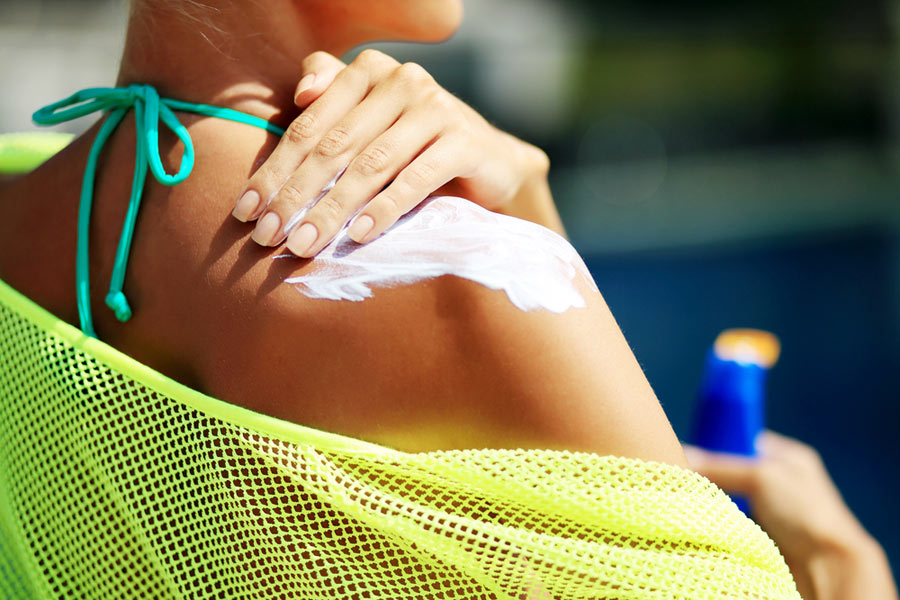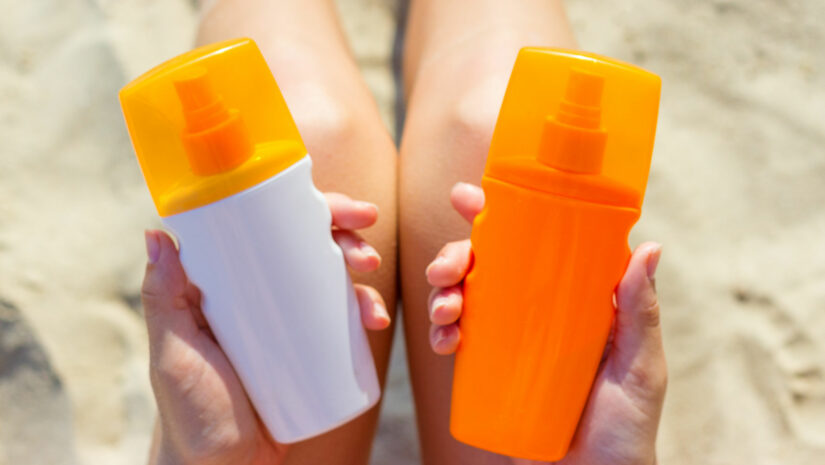We all know we have to apply some type of sun protectant before going swimming or participating in outdoor sports—or basically any time we go out in the sun. However, there are still many of us who don’t know the real difference between a sunscreen and a sunblock.
There are already enough of these products to confuse us, so to help you choose the right type sun protectant, we’ll be explaining their main differences and uses in this article. But first, let’s talk about some commonly used terms that will help you better understand these two types of sun protectants.
SPF and UV Protection

Many think SPF, which is always followed by a number on the label of virtually every sunscreen or sunblock, is the measure of the product’s shield strength. This is both correct and incorrect.
SPF, or Sun Protection Factor, is the estimated maximum “amount” of UV radiation that the product can protect your skin from. To figure out the SPF number that you’ll need, you can use the formula: SPF Number x Exposure Time Without Protection = Minutes Protected. So SPF 15 x 10 minutes = 150 minutes of protection.
As for UV protection, UVA is for protection from (skin) aging while UVB protects you from burning.
Sunblock vs Sunscreen

To help you understand what sunscreens and sunblocks are, we’ll describe their distinctions and similarities when it comes to type, protection factor, and application method below.
Physical or Chemical
Sun protection products typically come in gel, lotion, or cream form, but recently brands have come out with sunscreens in the form of powders and mists. However, for the purpose of this comparison, we’ll stick to the most popular types, which are the abovementioned emollients.
The main difference between sunscreen and sunblock lies in how they protect the skin against harmful UV rays. Sunblock is so named because it literally blocks UV rays by forming a physical shield, while a sunscreen absorbs them.
Technically, the word “sunscreen” is a loose term that can be used to describe either a physical or chemical sun protectant—but “sunblock” is always used to describe physical UV protection products.
Sunblock, being the physical kind, is normally opaque and leaves a white cast. It does not need to be reapplied every few hours as it can stay on the top layer of the skin for a prolonged period of time. Once applied, it serves as a barrier against the damaging rays of the sun by scattering and reflecting them away from the skin.
Sunscreen, on the other hand, is the chemical kind that absorbs the UVA rays. Once applied and absorbed by the skin, it’s usually imperceptible. It also tends to break down after prolonged sun exposure, so you will need to reapply every two or three hours to ensure continued protection.
Physical sun protectants usually contain zinc oxide or titanium dioxide as their main active ingredient. Meanwhile, chemical products usually contain organic chemical compounds such as octyl methoxycinnamate, octyl salicylate, octocrylene, and ecamsule.
Protection Factor
Sunblocks are specially formulated to protect the skin from burning UVB rays, which is why they are generally thicker than sunscreens. The latter is more focused on shielding the skin against wrinkle-causing UVA rays. This is not true of all products, however, as there are many on the market that offer full-spectrum protection against both UVA and UVB rays.
Apart from choosing a broad-spectrum sun protectant, it’s also important to choose the right SPF for your needs. According to the American Academy of Dermatology, it’s best to go for anything with an SPF of 30 or higher: “Dermatologists recommend using a sunscreen with an SPF of at least 30, which blocks 97 percent of the sun’s UVB rays. Higher SPF numbers block slightly more of the sun’s UVB rays, but no sunscreen can block 100 percent of the sun’s UVB rays.”
Application
Another key difference between sunblock and sunscreen is the application. Since sunblock provides a physical barrier, you can simply slather it on instead of rubbing it into the skin. You also don’t need to wait for the product to absorb, because it’s not really supposed to. However, it’s important to remember to apply it evenly—otherwise, you risk allowing the UV light to reach certain parts (no matter how small) of the skin.
Even application isn’t such an issue with chemical sunscreens as they do not work by forming a barrier on top of the skin. Nonetheless, there are some things you’ll need to remember when applying this type of sun protectant to your skin—like waiting. With chemical sunscreens, you need to give your skin time to absorb the product before you go out into the sun. As a general rule, make sure to wait 30 minutes after application. That should be enough time for the product the penetrate the skin.
As for the amount of product you need to apply, an ounce (almost as much as a full shot glass) should be the minimum for everyday use. Make sure you also slather on a liberal amount for optimum protection.
Which One Should I Use?

The most important factors to consider when choosing a sun protectant for you is your personal needs, habits, and activity level. Many prefer quick-dry solutions, especially for activities that require you to move a lot.
If you have fairly sensitive skin, you’re likely better off with sunblocks that contain less irritating ingredients like titanium oxide and zinc oxide. You might even want to use a different product on your face, like a waterproof sun stick, for broad-spectrum protection minus the greasy feel. And if you’re going to be swimming or sweating a lot, you’ll have to reapply the product more frequently to keep your skin protected.
But even if you’re not heading to the beach or out doing water sports, you’ll definitely need to use sunscreen on a daily basis as UV rays can damage the skin even without direct sun exposure. Therefore, make sure to choose one that blocks UVA to keep your skin healthy and youthful, blocks UVB to keep your skin from burning, and is comfortable and convenient for you to use—after all, if you’re going to be wearing it every single day, you’re probably not going to want something that gives you a white cast (especially on the face) or feels greasy and gross on the skin.
If you’re a frequent beachgoer, consider going for reef-friendly products. Certain chemical ingredients found in most sun protectants are harmful to coral reefs, so the conscientious and responsible thing to do is to make the switch to nontoxic, eco-friendly sun protection products.
Tell us—what’s YOUR favorite sunblock/sunscreen?




